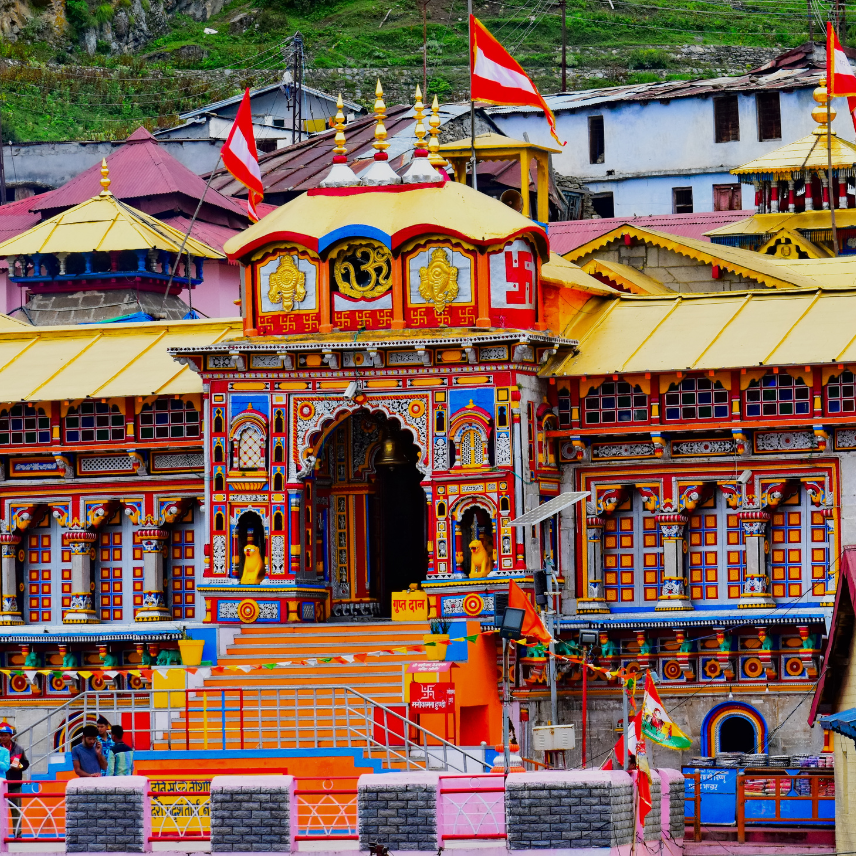Badrinath, nestled in the majestic Garhwal Himalayas, is a destination that offers not just breathtaking natural beauty but also deep spiritual significance. As one of the Char Dham pilgrimage sites, Badrinath holds a special place in the hearts of devotees and travelers alike. This serene town is home to sacred sites that tell tales of ancient legends and provide an immersive experience into India's rich cultural heritage.
Badrinath Temple: A Divine Abode of Lord Vishnu
Badrinath Temple, dedicated to Lord Vishnu, is the crown jewel of this town. Standing tall against the backdrop of snow-capped peaks, the temple's striking architecture and spiritual ambiance draw thousands of pilgrims every year. The temple's origins date back to the 8th century, attributed to the revered saint Adi Shankaracharya. The sanctum sanctorum houses the idol of Lord Vishnu, worshipped in his dual form as Nar and Narayan.
The journey to Badrinath Temple is not just a physical one but a spiritual quest, where each step taken by the devotees is filled with devotion and reverence. The rituals and prayers conducted here resonate with the hymns from ancient scriptures, enveloping the entire atmosphere in a divine aura.
Tapt Kund: The Healing Waters of Badrinath
Just a short distance from the Badrinath Temple lies Tapt Kund, a natural hot water spring believed to have healing properties. The word "Tapt" means hot, and "Kund" refers to a reservoir. Pilgrims visiting the temple take a dip in these waters before offering their prayers, as it is believed to cleanse the body and soul.
The temperature of the spring water remains constant throughout the year, despite the freezing temperatures around it. The hot water is said to be a manifestation of Agni, the Hindu god of fire, and is considered sacred by devotees. Bathing in Tapt Kund is not just a ritual but a rejuvenating experience, where one can feel a deep connection with the elements of nature.
Mana Village: A Glimpse into History and Culture
A short drive from Badrinath brings you to Mana Village, the last inhabited village on the Indian side of the Indo-Tibetan border. Mana is more than just a geographical location; it is a place steeped in history and mythology. Known as the "Last Indian Village," Mana offers a unique cultural experience that transports you to a different era.
The village is closely associated with the Mahabharata, one of the great Indian epics. It is believed that the Pandavas passed through this village during their journey to heaven. The Bhim Pul, a natural rock bridge over the Saraswati River, is a popular spot in Mana, said to have been created by Bhima, one of the Pandava brothers.
The quaint village is also home to small shops selling woolen garments, local handicrafts, and herbal remedies. The friendly villagers welcome visitors with open arms, offering insights into their simple yet rich way of life. Walking through the narrow lanes of Mana, surrounded by stunning mountain landscapes, one can truly appreciate the harmony in which the villagers live with nature.
Conclusion
Badrinath, with its sacred sites and serene environment, offers a unique blend of spirituality, history, and natural beauty. Whether you are a pilgrim seeking divine blessings or a traveler exploring India's cultural heritage, Badrinath promises an unforgettable experience. The sacred Badrinath Temple, the healing waters of Tapt Kund, and the historic Mana Village together create a tapestry of spiritual and cultural richness that leaves a lasting impression on all who visit.



